 Winnaar van categorie in de landen:
Winnaar van categorie in de landen:
Warsaw UNIT

| Categorie | Commerciële projecten |
|---|---|
| Jaar | 2020 |
| Land | Poland |
| Organisatie | Fort Polska Sp. z o.o. |
| Auteur | Fort Polska Sp. z o.o. |
| Cliënt | Projekt Polsko-Belgijska Pracownia Architektury Sp. z o. o. |
| Plaats van constructie | Warszawa |
| Tags |
Warsaw UNIT to inwestycja zlokalizowana w Warszawie przy Rondzie Daszyńskiego. Ten wysokościowiec mierzy 202 m, posiada 3 kondygnacje podziemne, 45 nadziemnych oraz 6 kondygnacji technicznych na szczycie budynku. Przeznaczenie to powierzchnie biurowe.
Fort Polska zarówno projekt konstrukcji żelbetowej jak i stalowej wykonał w środowisku 3d, wymiana informacji z pozostałymi uczestnikami procesu projektowego z wykorzystaniem narzędzi BIM. Projekt konstrukcji stalowej opracowano w Tekla Structures. Na etapie modelowania elementom stalowym przypisano dodatkowe parametry użytkownika ułatwiające filtrowanie i ewentualną kontrolę kolizji w zewnętrznym oprogramowaniu. Masa konstrukcji stalowej szacowana jest na ok. 290 ton. Głównym elementem zaprojektowanej konstrukcji stalowej jest konstrukcja stalowa poszycia elewacji kondygnacji technicznych oraz konstrukcja dwóch ostatnich kondygnacji stanowiąca platformę dla maszyny myjącej. Oprócz uprzednio wymienionych elementów zaprojektowano mnóstwo pomniejszych konstrukcji m. in. schody, pomosty obsługowe, drabiny dostępowe, balustrady, podpory instalacji, kratownice przestrzenne w lobby, konstrukcja stalowa windy panoramicznej. W ramach projektu konstrukcji stalowej wykonano ok. 400 zestawień oraz rysunków wykonawczych. Dzięki pracy w Tekli Structures mogliśmy podczas projektowania uwzględnić bardzo dużą ilość elementów innych branż minimalizując ilość kolizji na budowie. Za architekturę i koordynację odpowiada Projekt Polsko-Belgijska Pracownia Architektury Sp. z o. o., instalacje zaprojektowała firma AER Polska, zaś autorem projektu konstrukcji jest Fort Polska. Inwestor – Ghelamco Poland, planuje zakończenie realizacji obiektu w 2021 rok.
Warsaw UNIT is an investment located in Warsaw at Daszyńskiego roundabout. This high-rise building measures 202 m, has 3 underground floors, 45 above ground floors and 6 technical floors at the top of the building. It’s purpose is an office space.
Fort Polska carried out the reinforced concrete and steel structure design in a 3d environment, exchanging information with other participants of the design process using BIM tools. The steel structure design was developed at Tekla Structures. At the modeling stage, steel elements were assigned additional user parameters to facilitate filtering and possible collision control in external software. The weight of the steel structure is estimated at around 290 tons. The main element of the designed steel structure is the cladding steel structure of the technical storeys facade and the construction of the last two storeys constituting the platform for the washing machine. In addition to the elements mentioned above, a lot of smaller constructions were designed, among others stairs, service platforms, access ladders, balustrades, installation supports, spacious trusses in the lobby, steel structure of the panoramic elevator. As a part of the steel structure design, approximately 400 specifications and drawings have been made. Thanks to our work at Tekla Structures, we were able to take into account a very large number of elements of other industries while designing, minimizing the number of collisions at the construction site.
The Projekt Polsko-Belgijska Pracownia Architektury Sp. z o. o. is responsible for architecture and coordination, the installations were designed by AER Polska, and the author of the construction design is Fort Polska. The investor – Ghelamco Poland, plans to complete the building in 2021.
 Winnaar van categorie in de landen:
Winnaar van categorie in de landen:
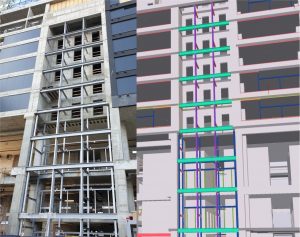

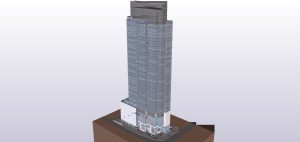


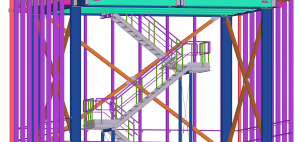
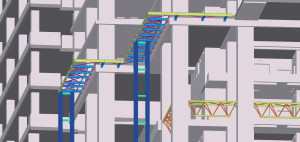

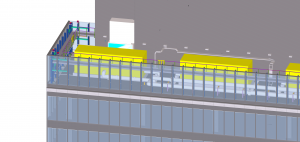
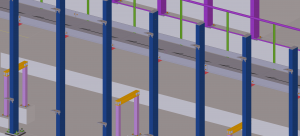

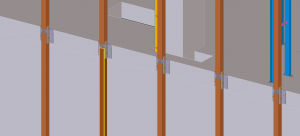
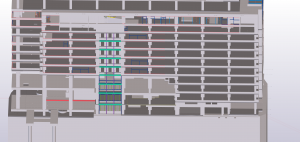
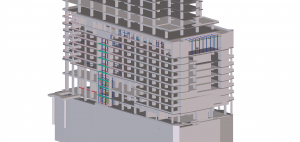
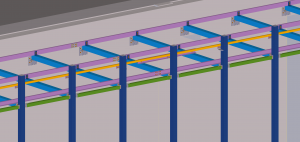
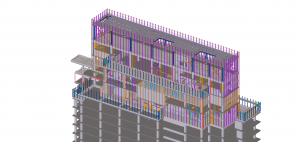

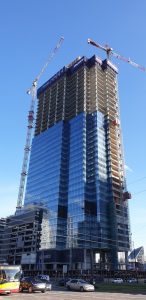
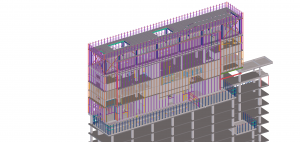


nice!
Świetny projekt! Brawa dla całego zespołu!
Projekt wygląda imponująco, ale o ile dobrze interpretuję opis i dokumenty to tylko niewielkie fragmenty konstrukcji stalowej zostały zaprojektowane w programie Tekla Structures, a cały żelbet w innym programie, dlatego nie rozumiem jak mógł wygrać w swojej kategorii – na prawdę nie było żadnej konkurencji?